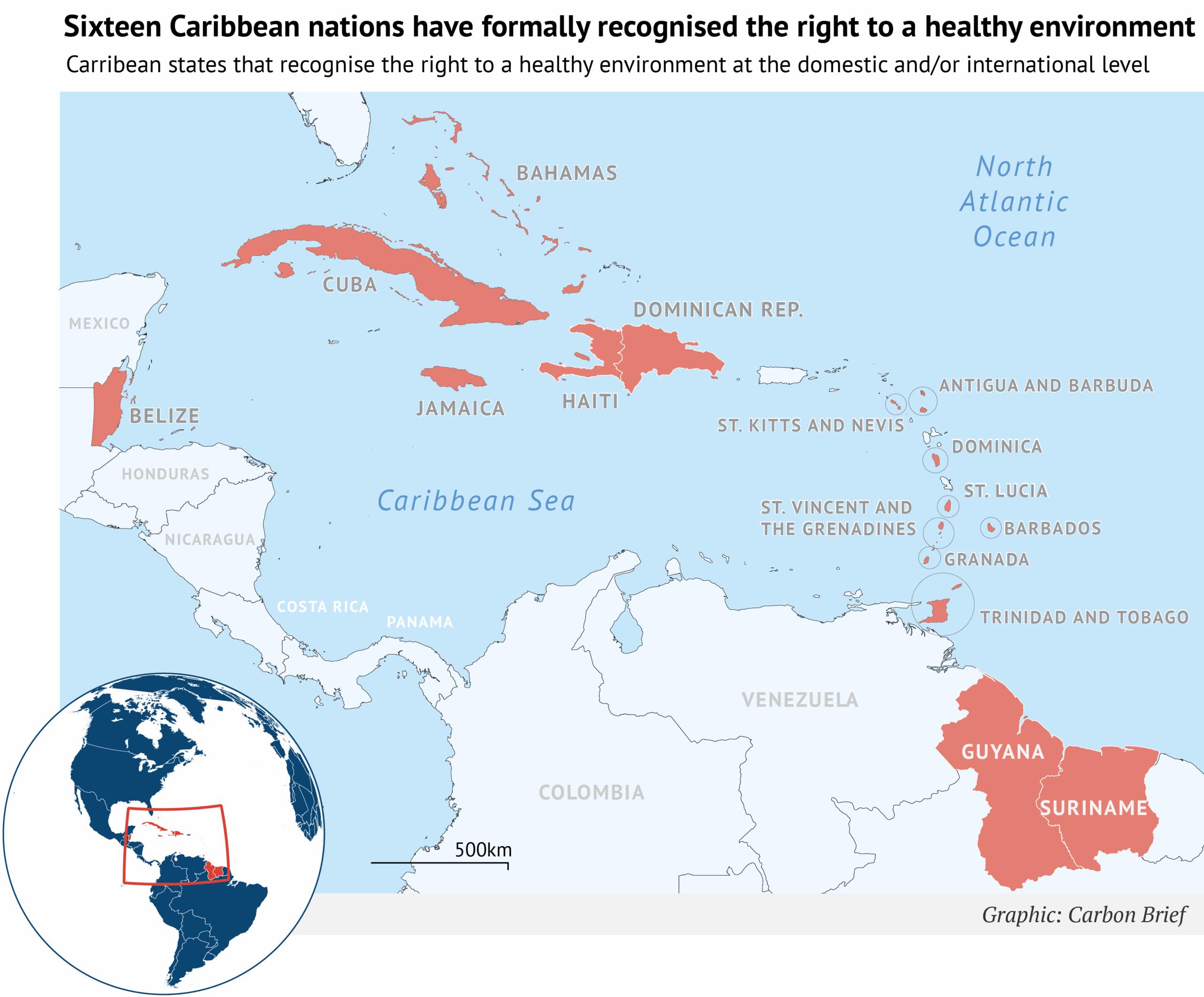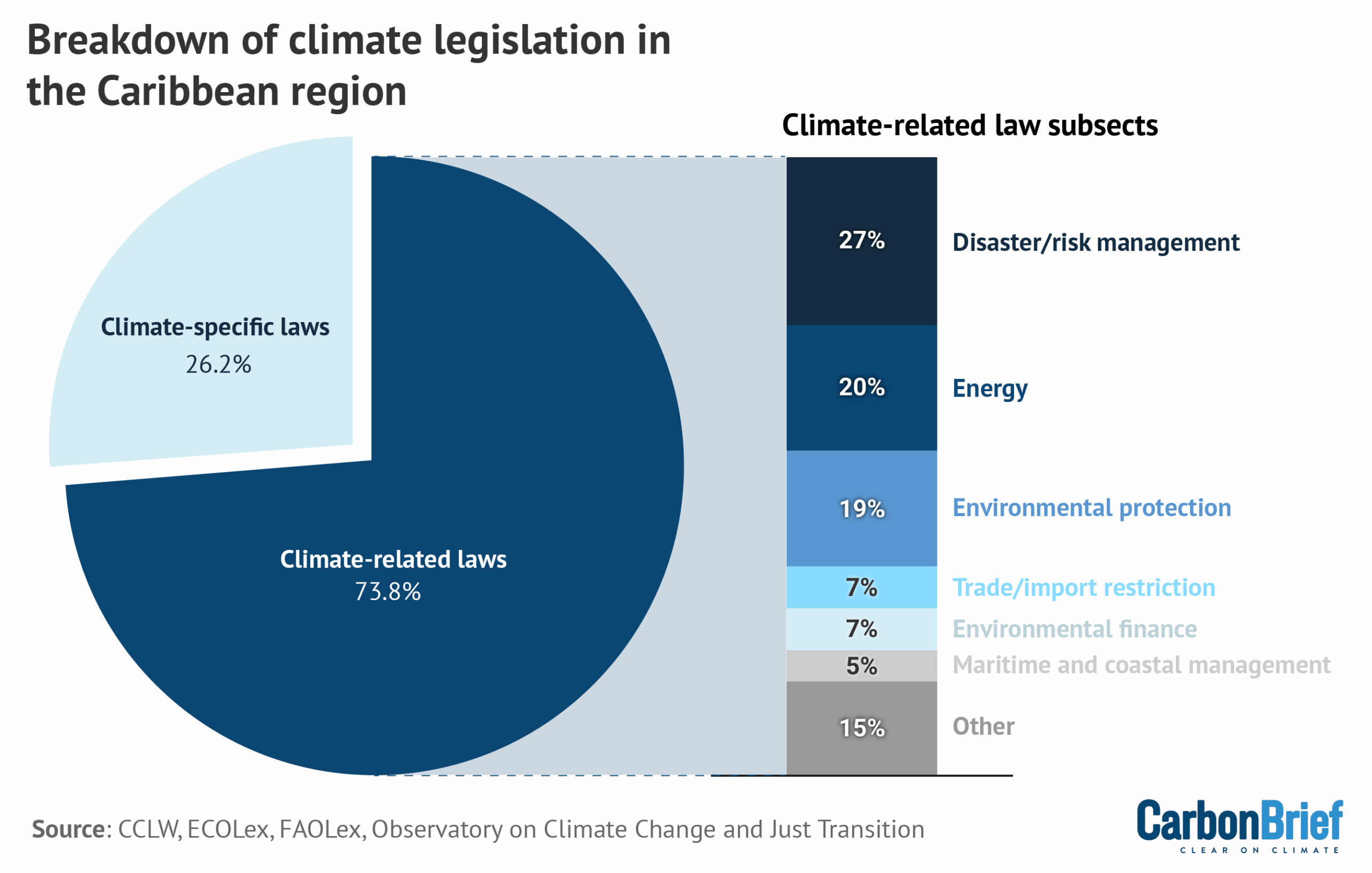A “collapse” of key Atlantic ocean currents would cause winter temperatures to plunge across northern Europe, overriding the warming driven by human activity.
That is according to new research, published in Geophysical Research Letters, which looks at the combined impact of the shutdown of the Atlantic Meridional Overturning Circulation (AMOC) and global warming on temperatures in northern Europe.
Scientists have warned that human-caused climate change is likely causing AMOC to weaken and that continued warming could push it towards a “tipping point”.
The study suggests that, in an intermediate emissions scenario, greenhouse gas-driven warming would not be able to outweigh the cooling impact of an AMOC collapse.
In this modelled world, one-in-10 winters in London could see cold extremes approaching -20C.
Winter extremes in Oslo in Norway, meanwhile, could plummet to around -48C.
The cold temperatures are projected to be driven by the loss of heat transfer from the tropics via ocean currents, as well as the spread of sea ice to northern Europe in the winter months.
The research does not look at when AMOC might tip – instead, it focuses on scenarios in the far future when this has already happened, so as to explore what impact it would have.
Lead author Dr René van Westen, a researcher in oceanography at Utrecht University, says Europe might stand alone as the one region set to get “cooler in a warmer world”. He tells Carbon Brief:
“If the AMOC collapses, we need to prepare for substantially cooler winters. Winter extremes will be very substantial for some regions. Temperatures could go down to -50C in Scandinavia. At -40C and lower in Scandinavia – everything breaks down over there.”
The research is being published alongside an interactive map, featured below, which highlights how a collapsed AMOC under different warming scenarios could impact temperature averages, extremes and sea ice across Europe.
‘Will warming or cooling win?’
AMOC is a system of ocean currents which plays a crucial role in keeping Europe warm. It transports warm water northwards from the tropics to Europe and cold, deep waters back southwards.
The potential collapse of these ocean currents – caused by the influx of freshwater from melting ice as well as rising air temperatures – is seen by some scientists as a “tipping point” that, once triggered, would be irreversible on human timescales.
However, there is significant scientific debate around whether human-caused climate change is causing the AMOC to slow down – and whether and when it might “tip”.
(The “tipping” of AMOC is often referred to as a “collapse”, “breakdown” or “shutdown”.)
Some scientists have argued that ocean currents have been slowing down since the mid-20th century, whereas others say there has been no weakening since the 1960s.
On the risks of an approaching tipping point, some researchers have estimated a collapse could occur this century, but others have questioned the robustness of the early warning signals being interpreted as evidence of a forthcoming shutdown.
(Regular direct measurements of AMOC’s strength started in 2004. To estimate the ocean currents’ health prior to this, scientists turn to a number of methods, including looking at palaeoclimate records, running climate model “hindcasts” and analysing historical patterns in sea surface temperature.)
A paper published last year by van Westen and colleagues, which ranked second in Carbon Brief’s round-up of the most talked-about climate papers of 2024, found that the present-day AMOC is on a trajectory towards tipping.
That paper set out some of the climate impacts of such an event, including a 10-30C drop in average monthly winter temperatures in northern Europe within a century and a “drastic change” in rainfall patterns in the Amazon.
The scientist’s latest offering provides a more detailed look at how an AMOC tipping event might impact Europe, using simulations produced by the Community Earth System Model (CESM).
The research models the impact of an AMOC collapse in combination with the impacts of human-caused climate change, instead of looking at the collapse of the ocean currents in isolation.
Van Westen says the research was designed to answer the question of how warming from greenhouse gas emissions could offset cooling from an AMOC shutdown. He tells Carbon Brief:
“[A question we wanted to address was] what would happen in a scenario where we have climate change and an AMOC collapse. Will it get cooler over Europe, or will it get warmer? Will regional warming win or will the cooling win?”
Simulating AMOC ‘collapse’
To answer this question, the scientists run a raft of climate simulations, exploring different combinations of global temperature rise and AMOC collapse.
Specifically, the scientists explore the collapse of AMOC under three scenarios:
- An “intermediate” climate scenario (RCP4.5), which is in line with current global climate policies.
- A very high-emissions scenario (RCP8.5) where warming hits 4C above the pre-industrial average by 2100.
- A “pre-industrial” scenario, without any human-caused global warming.
Across all three scenarios, the researchers run multiple simulations 500 years into the future, stabilising global temperature rise at 2C and above 4C from 2100 onwards. The researchers explore scenarios where AMOC is stable and when it has tipped.
The paper does not discuss the level of warming at which AMOC might tip – instead, it focuses on a point in the future after it has occurred, when the ocean currents and the climate have “equilibrated to a new background state”.
To simulate an AMOC collapse in the climate model under the two warming pathways, the researchers apply high levels of freshwater forcing to the north Atlantic.
Van Westen acknowledges the level of freshwater forcing applied to the model to create an AMOC shutdown is “unrealistic”, but says the adjustment is necessary to override a “bias” in climate models. He explains:
“[Climate models] have an overly stable AMOC. So, we need to add this kind of freshwater flux to get the AMOC in a more unstable regime which corresponds to actual observations.”
The paper focuses largely on impacts under the intermediate scenario with AMOC collapse. Under this combination, AMOC shutdown causes some global cooling, resulting in a world that is around 2C warmer than pre-industrial levels.
Prof Stefan Rahmstorf, a professor of physics of the oceans at Potsdam University who was not involved in the research, tells Carbon Brief the new study is “highly welcome”. He explains that “not many” studies have investigated the combined impact of global warming with AMOC collapse since a paper he co-authored in 1999, and adds:
“[The new study] uses a sophisticated climate model with good regional resolution – far better than what was possible 26 years ago. The model confirms the long-standing concern that an AMOC collapse would have massive impacts on European climate, in this case focusing on temperature extremes.”
Dr Alejandra Sanchez-Franks, senior research scientist in the marine physics and ocean climate group at National Oceanography Centre, who was also not involved in the research, says the study’s conclusions should not be used to explain how the European climate will respond in the near-term to changes in the strength of AMOC. She tells Carbon Brief:
“The study uses an idealised experiment with unrealistic freshwater changes to force an AMOC collapse. Very importantly, the author’s conclusions refer to the European climate 200 years after an AMOC change and do not describe what will happen to European temperatures and sea ice in the years and decades following an AMOC collapse.
“Therefore, the study does not serve to tell us how an AMOC tipping point or collapse will affect us immediately.”
‘Out of the freezer and into the frying pan’
The most “striking” finding of the paper, according to van Westen, is that an AMOC collapse in a world that is 2C warmer will result in a Europe that is cooler than it is today.
The research notes that – under this scenario – north-west Europe is set to face “profound cooling”, characterised by more intense winter extremes.
Summer temperatures, on the other hand, would be expected to remain just slightly cooler than they would in a pre-industral climate – meaning that Europeans would experience dramatic swings in temperatures throughout the year.
Increased winter storms and greater day-to-day temperature fluctuations are also expected in this scenario. This is due to a greater temperature contrast between northern Europe and southern Europe, which would be less impacted by a weakened AMOC.
The research notes that cooling from the reduced heat transfer from ocean currents would be amplified by “extensive” sea ice expansion to the coasts of north-west Europe. (Sea ice reflects incoming solar sunlight, resulting in less heat uptake and cooler temperatures overall.)
The map below shows the extent of sea ice in February under the scenario where AMOC collapses and the world is 2C warmer. It shows how Arctic sea ice – when at its yearly maximum – would cover the coasts of Scandinavia and much of the island of Great Britain.

Prof Tim Lenton, chair of climate change and Earth system science at the University of Exeter, who was not involved in the study, tells Carbon Brief it is “hard to over-stress how different” the climate simulated by the model is from present-day conditions. He says:
“The extreme winters would be like living in an ice age. But at the same time summer temperature extremes are barely impacted – they are slightly cooler than they would be due to global warming, but still with hotter extremes than the preindustrial climate.
“This means the seasonality of the climate is radically increased. In extreme years it would be like coming out of the freezer into a frying pan of summer heatwaves.”
The research also looks at the impacts of a shutdown of AMOC in a world that is 4C warmer.
It suggests that, under this scenario, cooling related to the shutdown of ocean currents would not outweigh global warming. Northern Europe would not experience extensive sea-ice expansion or the strong cooling projected under the 2C scenario.
Instead, temperatures would be expected to increase throughout the year and particularly in the summer months. However, northern Europe would be expected to see warming below the global average.
Frigid cities
While the paper itself uses the Dutch town of De Bilt as a case study, the researchers have published projections for a range of European cities under the scenarios explored in the study.
For example, the data shows that, under AMOC collapse in a 2C-warmer world, London could experience an average winter temperature of 1.9C, roughly 17.6 freezing days each year and one-in-10-year cold extremes of -19.3C.
In the Norwegian capital of Oslo, average winter temperatures are projected to plunge to -16.5C, with maximum daily temperatures not surpassing 0C for almost half the year, or 169 days. The research suggests the Norwegian city could experience cold extremes of -47.9C.
The map below shows projected cold extremes under 2C of warming and AMOC collapse in cities in Belgium, France, Ireland, the Netherlands, Switzerland and the UK. It shows how temperatures could drop to -29.7 in Edinburgh, -19.3C in London and -18C in Paris.

Van Westen says the findings are “highly relevant for society and policymakers” because they “shift the narrative” about the direction of Europe’s future climate. He explains:
“Parts of the Netherlands and parts of the UK will experience spectacular cold extremes down to -20C or even lower. Our societal structure and our infrastructure is not built for these cold extremes.”
The paper is being published alongside an interactive map, shown below, that shows ice cover, temperature averages and extremes across the world under five of the scenarios explored in the study. These are: a pre-industrial world with a stable AMOC, a pre-industrial world with a collapsed AMOC, a 2C world with a stable AMOC, a 2C world with a collapsed AMOC and a 4C world with a collapsed AMOC.
Future research
Scientists not involved in the study said the work would need to be followed up with further exploration of the interplay between global warming and potential AMOC collapse.
Dr Bablu Sinha, leader of climate and uncertainty, marine systems modelling at the National Oceanography Centre, told Carbon Brief:
“Given that observational data is limited, theoretical climate modelling approaches need to be taken to properly investigate this topic. Van Westen and Baatsen motivate the need for more detailed investigation into the combined impacts of global warming and AMOC decline on European extreme temperatures.”
Dr Yechul Chin, researcher at Seoul National University’s climate system lab, tells Carbon Brief:
“Although [this research] demonstrates the potential for more extreme weather under combined global warming and AMOC collapse scenarios, significant uncertainties remain that must be resolved before we can quantify risks or devise robust mitigation strategies.
“Projections about AMOC have a large spread and it means that alternative AMOC trajectories and different levels of warming could substantially widen the range of possible outcomes.”
His comments are echoed by Rahmstorf from Potsdam University, who points out that the “exact outcome” for Europe hinges on the development of “two opposing trends” – global warming due to greenhouse gases and regional cooling due to AMOC weakening. He says:
“The balance between those two will depend on the speed and extent of these trends and will, therefore, depend on the emission and AMOC weakening scenarios.
“Therefore, the more scenarios will be explored with different models in future, we will see a range of different outcomes for Europe as well as other parts of the world. A large uncertainty in this respect will remain.”
The post Ocean current ‘collapse’ could trigger ‘profound cooling’ in northern Europe – even with global warming appeared first on Carbon Brief.
Greenhouse Gases
DeBriefed 10 October 2025: Renewables power past coal; Legacy of UK’s Climate Change Act; Fukushima’s solar future
Welcome to Carbon Brief’s DeBriefed.
An essential guide to the week’s key developments relating to climate change.
This week
Renewables overtake coal
‘HISTORIC FIRST’: Renewables have overtaken coal to become the world’s leading source of electricity for the first six months of this year in a “historic first”, BBC News said. The analysis, from the thinktank Ember, found the world generated “almost a third” more solar power in the first half of the year, compared with the same period in 2024, while wind power grew by “just over 7%,” reported the Guardian.
HEAVY LIFTING: According to the report, China and India were “largely responsible for the surge in renewables”, while the US and Europe “relied more heavily on fossil fuels,” the Guardian wrote. China built more renewables than every other country combined in the first half of this year, the newspaper added.
CONTINENTAL SHIFTS: A second report from the International Energy Agency (IEA) predicted a “surge” in global wind and solar capacity by 2030, but shaved 5% off its previous forecast, the Financial Times said. The IEA revealed that India is set to become the second-largest growth market for renewables after China, “with capacity expected to increase 2.5 times by 2030”, Down to Earth reported. The IEA also upped its forecast for renewables in the Middle East and north Africa by 23%, “helped by Saudi Arabia rolling out wind turbines and solar panels”, but halved the outlook for the US, the FT noted.
Around the world
- EV BOOM: Sales of electric and hybrid cars made up “more than half” of all new car registrations in the UK last month, a new record, according to data from the Society of Motor Manufacturers, reported BBC News.
- BANKING COLLAPSE: A global banking alliance launched by the UN to get banks to slash the carbon footprint of their loans and investments and help drive the transition to a net-zero economy by 2050 has collapsed after four years, Agence France-Press reported.
- CUTS, CUTS, CUTS: The Trump administration plans to cut nearly $24bn in funding for more than 600 climate projects across the US, according to documents reviewed by the Wall Street Journal.
- PEOPLE POWER: A farmer, a prison guard and a teacher were among those from the Dutch-Caribbean island Bonaire who appeared at the Hague on Tuesday to “accuse the Netherlands of not doing enough to protect them from the effects of climate change”, Politico reported.
400,000
The number of annual service days logged by the US National Guard responding to hurricanes, wildfires and other natural disasters over the past decade, according to a Pentagon report to Congress, Inside Climate News reported.
Latest climate research
- Politicians in the UK “overwhelmingly overestimate the time period humanity has left to bend the temperature curve”, according to a survey of 100 MPs | Nature Communications Earth and Environment
- Fire-driven degradation of the Amazon last year released nearly 800m tonnes of CO2 equivalent, surpassing emissions from deforestation and marking the “worst Amazon forest disturbance in over two decades” | Biogeosciences
- Some 43% of the 200 most damaging wildfires recorded over 1980-2023 occurred in the last decade | Science
(For more, see Carbon Brief’s in-depth daily summaries of the top climate news stories on Monday, Tuesday, Wednesday, Thursday and Friday.)
Captured

The UK’s Climate Change Act, landmark legislation that guides the nation’s response to climate change, is increasingly coming under attack from anti-net-zero right-leaning politicians. In a factcheck published this week, Carbon Brief explained how the UK’s Climate Change Act was among the first comprehensive national climate laws in the world and the first to include legally binding emissions targets. In total, 69 countries have now passed “framework” climate laws similar to the UK’s Climate Change Act, with laws in New Zealand, Canada and Nigeria among those explicitly based on the UK model. This is up from just four when the act was legislated in 2008. Of these, 14 are explicitly titled the “Climate Change Act”.
Spotlight
Fukushima’s solar future
This week, Carbon Brief examines how Fukushima helped to recover from nuclear disaster by building solar farms on contaminated farmland.
On 11 March 2011, an earthquake off the pacific coast of Japan caused 15m-tall waves to crash into the eastern region of Tōhoku, killing 19,500 people and injuring a further 6,000.
In the aftermath, flooding at the Fukushima Daichi nuclear power plant caused cooling systems to fail, leaching radioactive contaminants into the soil and leading to a major nuclear incident.
Some 1,200km2 around the site was restricted and up to 100,000 people were evacuated – in some cases forever.
In the years following, Japan entered a fraught debate about nuclear energy.
In 2010, nuclear power provided 25% of Japan’s electricity, but, in the years following the disaster, its 54 nuclear reactors were taken offline.
Successive governments have fought over reintroducing nuclear power. Today, some 14 reactors are back online, 27 have been permanently closed and another 19 remain suspended. (Japan’s newly-elected prime minister Sanae Takaichi has promised to make nuclear central to her energy strategy.)
Against this backdrop, Fukushima – a prefecture home to 1.8 million people – has emerged as a surprise leader in the renewables race.
In 2014, the Fukushima Renewable Energy Institute (FREA) opened with the twin goals of promoting research and development into renewable energy, while “making a contribution to industrial clusters and reconstruction”.
That same year, the prefecture declared a target of 100% renewable power by 2040.
Contaminated land
“A lot of these communities, I know, were looking for ways to revitalise their economy,” said Dr Jennifer Sklarew, assistant professor of energy and sustainability at George Mason University and author of “Building Resilient Energy Systems: Lessons from Japan”.
Once evacuation orders were lifted, however, residents in many parts of Fukushima were faced with a dilemma, explained Skarlew:
“Since that area was largely agricultural, and the agriculture was facing challenges due to stigma, and also due to the soil being removed [as part of the decontamination efforts], they had to find something else.”
One solution came in the form of rent, paid to farmers by companies, to use their land as solar farms.
Michiyo Miyamoto, energy finance specialist at the Institute for Energy Economics and Financial Analysis, told Carbon Brief:
“The [Fukushima] prefecture mapped suitable sites early and conducted systematic consultations with residents and agricultural groups before projects were proposed. This upfront process reduced land-use conflicts, shortened permitting timelines and gave developers clarity.”
As a result, large-scale solar capacity in Fukushima increased to more than 1,300 megawatts (MW) from 2012 to 2023, according to Miyamoto. Moreover, installed renewable capacity now exceeds local demand, meaning the region can run entirely on clean power when conditions are favourable, Miyamoto said.
Today, aerial pictures of Fukushima reveal how solar panels have proliferated on farmland that was contaminated in the nuclear disaster.

Charging on
Last year, 60% of Fukushima’s electricity was met by renewables, up from 22% in 2011. (The country as a whole still lags behind at 27%.)
And that is set to grow after Japan’s largest onshore windfarm started operations earlier this year in Abukuma, Fukushima, with a capacity of 147MW.
The growth of solar and wind means that Fukushima is already “ahead of schedule” for its 2040 target of 100% renewable power, said Miyamoto:
“The result is a credible pathway from recovery to leadership, with policy, infrastructure and targets working in concert.”
Watch, read, listen
OVERSHOOT: The Strategic Climate Risks Initiative, in partnership with Planet B Productions, has released a four-part podcast series exploring what will happen if global warming exceeds 1.5C.
DRONE WARFARE: On Substack, veteran climate campaigner and author Bill McKibben considered the resilience of solar power amid modern warfare.
CLIMATE AND EMPIRE: For Black history month, the Energy Revolution podcast looked at how “race and the legacies of empire continue to impact the energy transition”.
Coming up
- 12 October: presidential elections, Cameroon
- 13-14 October: Pre-COP, Brasilia, Brazil
- 13-18 October: World Bank Group/IMF annual meetings, Washington DC
- 14-17 October: 2nd extraordinary session of the Marine Environment Protection Committee at the International Maritime Organisation, London
- 15-16 October: Circle of Finance Ministers report
Pick of the jobs
- Buckinghamshire Council, principal climate change officer | Salary: £49,354-£51,759. Location: Aylesbury, Buckinghamshire
- Sustainable NI, sustainable business lead | Salary: £60,000. Location: Belfast, Northern Ireland
- Dialogue Earth, South Asia managing editor | Salary: £1,875 per month. Location: South Asia
DeBriefed is edited by Daisy Dunne. Please send any tips or feedback to debriefed@carbonbrief.org.
This is an online version of Carbon Brief’s weekly DeBriefed email newsletter. Subscribe for free here.
The post DeBriefed 10 October 2025: Renewables power past coal; Legacy of UK’s Climate Change Act; Fukushima’s solar future appeared first on Carbon Brief.
Greenhouse Gases
Guest post: How Caribbean states are shifting climate legislation
The Caribbean region is among the most vulnerable to climate change, despite historically contributing less than half of one percent of global greenhouse gas emissions.
Rising sea levels, extreme heat and more frequent and intense storms – such as the 2024 Hurricane Beryl, which made landfall in Grenada – pose urgent and growing threats to the small island states, coastal nations and overseas territories that comprise the Caribbean region.
With global progress to address climate change still too slow, Caribbean countries are taking matters into their own hands by enacting more robust legislation to help protect against climate risks.
In a new study published in the Carbon and Climate Law Review, we identified 78 climate laws and legally binding decrees across 16 Caribbean states, as well as two constitutional references to climate change and a growing recognition of the right to a healthy environment.
Our analysis suggests that, together, these developments are not only enhancing resilience, but also positioning Caribbean states as influential actors in the global climate arena.
Caribbean climate laws on the rise
Climate governance in the Caribbean has expanded significantly in recent years. In the past decade, countries such as Cuba and the Dominican Republic have embedded climate obligations and programmatic guidelines into their national constitutions.
At the same time, legislative recognition of the human right to a healthy environment is gaining momentum across the region. Six Caribbean nations now affirm the right in their constitutions, while 15 have recognised it through international instruments, such as the UN Council, UN Assembly and the Escazu Agreement, as shown in the figure below.

More recently, there has been a notable rise in targeted, sector-specific climate frameworks that go beyond broader environmental statutes.
Saint Lucia stands out as the only country with a climate framework law, or a comprehensive national law that outlines long-term climate strategies across multiple domains. Meanwhile, several other Caribbean governments have adopted climate-specific laws that focus on individual sectors, such as energy, migration and disaster management.
According to our analysis, more than a quarter of climate-relevant legislation in the region – comprising 21 laws and legally binding decrees – now has an explicit focus on climate change, as illustrated in the chart below.
Our research suggests that this represents an ongoing shift in legislative focus, reflecting changes in how climate legislation is being structured in one of the world’s most climate-vulnerable regions.

Caribbean nations are also advancing legal reforms to structure and institutionalise climate finance and market mechanisms directly into domestic law, aligned with Article 6.2 of the Paris Agreement.
For example, the Bahamas has introduced provisions for carbon credit trading, while Antigua and Barbuda, Barbados and Grenada have established national climate financing mechanisms to support mitigation and adaptation efforts.
Some states, including Belize and Saint Kitts and Nevis, have incorporated regional bodies such as the Caribbean Community Climate Change Centre – the climate arm of the intergovernmental Caribbean community organisation CARICOM – into national frameworks. This indicates an increasing alignment between regional cooperation and domestic law.
In addition to the influx of regulations specifically addressing climate change, Caribbean nations are also legislating broader environmental issues, which, in turn, could provide increased resilience from climate impacts and risks, as shown in the graph above.
Key trends in these types of climate-related laws include the expansion of disaster risk management governance, which addresses national preparedness for climate-induced weather events or related catastrophes. Likewise, energy law is an increasingly prominent focus, with countries including Antigua and Barbuda and Saint Vincent and the Grenadines integrating renewable energy and energy efficiency goals into national climate governance.
More broadly, many Caribbean nations have adopted wide-ranging and comprehensive environmental laws, many of which were developed in alignment with existing climate commitments. In combination, these legal developments reflect a dynamic and evolving climate governance landscape across the region.
Proactive vs reactive approaches
Despite general alignment with these broader regional trends, our research reveals distinct developmental pathways shaping domestic climate regulation.
In the eastern Caribbean, for example, we saw both proactive, long-term planning strategies and reactive, post-disaster reforms.
Saint Lucia’s multifaceted approach to climate resilience evolved steadily over the course of more than a decade. During this time, the country developed numerous adaptation plans, strengthened cross-sectoral coordination and engaged in institutional climate reforms in areas such as energy, tourism, finance and development.
More recently, the passage of Saint Lucia’s Climate Change Act in 2024 marked a milestone in climate governance, by giving legal force to the country’s obligations under the UNFCCC, the Kyoto Protocol and the Paris Agreement – making Saint Lucia one of the few small island states to incorporate global climate commitments into domestic law.
Our research indicates that this strategy has not only positioned the country as a more climate-resilient nation, but also solidified its access to international climate financing.
In contrast, Dominica’s efforts evolved more rapidly in the aftermath of Hurricane Maria in 2017, which destroyed over 200% of the country’s GDP. The storm’s impacts were felt across the country and hit particularly hard for the Kalinago people – the Caribbean’s last Indigenous community – highlighting the role of socioeconomic disparities in shaping climate vulnerability and resilience.
In response, the government passed the Climate Resilience Act, creating the temporary Climate Resilience Execution Agency for Dominica (CREAD).
Beyond establishing an exclusively climate-focused institution, the act aimed to embed resilience into governance by mandating the participation of vulnerable communities – including Indigenous peoples, women, older people and people with disabilities – in shaping and monitoring climate resilience projects.

As noted in a recent statement by the UN special rapporteur on Climate Change, Dr Elisa Morgera, these frameworks underscore the government’s ambition to become the world’s first “climate-resilient nation.”
Although challenges persist, Dominica’s efforts demonstrate how post-disaster urgency can drive institutional change, including the integration of rights and resilience into climate governance.
Uneven progress and structural gaps
Despite significant progress, our research shows that several key opportunities for climate governance across the Caribbean continue to exist, which could enable improvements in both resilience and long-term ambition.
The region’s legal landscape remains somewhat heterogeneous. While Saint Lucia has enacted a comprehensive climate framework law, the rest of the region lacks similar blanket legislation. This includes some states that entirely lack climate-specific laws, instead relying on related laws and frameworks to regulate and respond to climate-related risks.
Other nations have yet to adopt explicit disaster-risk management frameworks, leaving Caribbean populations vulnerable before, during and after climate emergencies. Most have yet to enshrine the right to a healthy environment at the national level.
Our research suggests that outdated legal frameworks are further limiting progress in addressing current climate risks. Because many of the longer-standing environmental laws in the region were adopted well before climate policy became a mainstream concern, some fail to address the nature, frequency and intensity of modern climate challenges, such as sea-level rise, tropical storms, wildfires, floods, droughts and other impacts.
More broadly, many Caribbean climate laws include limited integration of gender equity, Indigenous rights and social justice. As Caribbean nations such as Grenada and the Dominican Republic begin to link climate resilience with these issues, the region has an opportunity to lead by example.
Ultimately, capacity and resource constraints persist as significant barriers to implementation and adaptation.
The Caribbean region faces debt that exacerbates ongoing development challenges, a burden made heavier by the repeated economic shocks of climate-related disasters. Along with regional debt-for-resilience schemes, increased funding from high-emitting countries to support adaptation measures in climate-vulnerable nations – as endorsed under the Paris Agreement – is likely to be critical to ensuring the region’s climate laws can be executed effectively.
Global implications of Caribbean climate law
Our research suggests that Caribbean countries are outpacing other regions in terms of the scope and ambition of their climate laws. This legislation has the potential to serve as a model for climate-vulnerable nations worldwide.
Continuing efforts in the region show that legal frameworks in the field can not only drive resilience, embed rights and strengthen claims to international finance, but also highlight how regional cooperation and diplomacy can enhance global influence.
These findings demonstrate that innovation in climate law need not wait for action from major emitters, but can instead be led by those on the front lines of climate change.
The post Guest post: How Caribbean states are shifting climate legislation appeared first on Carbon Brief.
Guest post: How Caribbean states are shifting climate legislation
Greenhouse Gases
IEA: Renewables have cut fossil-fuel imports for more than 100 countries
More than 100 countries have cut their dependence on fossil-fuel imports and saved hundreds of billions of dollars by continuing to invest in renewables, according to the International Energy Agency (IEA).
It says nations such as the UK, Germany and Chile have reduced their need for imported coal and gas by around a third since 2010, mainly by building wind and solar power.
Denmark has cut its reliance on fossil-fuel imports by nearly half over the same period.
Renewable expansion allowed these nations to collectively avoid importing 700m tonnes of coal and 400bn cubic metres of gas in 2023, equivalent to around 10% of global consumption.
In doing so, the fuel-importing countries saved more than $1.3tn between 2010 and 2023 that would otherwise have been spent on fossil fuels from overseas.
Reduced reliance
The IEA’s Renewables 2025 report quantifies the benefits of renewable-energy deployment for electricity systems in fossil fuel-importing nations.
It compares recent trends in renewable expansion to an alternative “low renewable-energy source” scenario, in which this growth did not take place.
In this counterfactual, fuel-importing countries stopped building wind, solar and other non-hydropower renewable-energy projects after 2010.
In reality, the world added around 2,500 gigawatts (GW) of such projects between 2010 and 2023, according to the IEA, more than the combined electricity generating capacity of the EU and US in 2023, from all sources. Roughly 80% of this new renewable capacity was built in nations that rely on coal and gas imports to generate electricity.
The chart below shows how 31 of these countries have substantially cut their dependence on imported fossil fuels over the 13-year period, as a result of expanding their wind, solar and other renewable energy supplies. All of these countries are net importers of coal and gas.

In total, the IEA identified 107 countries that had reduced their dependence on fossil fuel imports for electricity generation, to some extent due to the deployment of renewables other than hydropower.
Of these, 38 had cut their reliance on electricity from imported coal and gas by more than 10 percentage points and eight had seen that share drop by more than 30 percentage points.
Security and resilience
The IEA stresses that renewables “inherently strengthen energy supply security”, because they generate electricity domestically, while also “improving…economic resilience” in fossil-fuel importer countries.
This is particularly true for countries with low or dwindling domestic energy resources.
The agency cites the energy crisis exacerbated by Russia’s invasion of Ukraine, which exposed EU importers to spiralling fossil-fuel prices.
Bulgaria, Romania and Finland – which have historically depended on Russian gas for electricity generation – have all brought their import reliance close to zero in recent years by building renewables.
In the UK, where there has been mounting opposition to renewables from right-wing political parties, the IEA says reliance on electricity generated with imported fossil fuels has dropped from 45% to under 25% in a decade, thanks primarily to the growth of wind and solar power.
Without these technologies, the UK would now be needing to import fossil fuels to supply nearly 60% of its electricity, the IEA says.
Other major economies, notably China and the EU, would also have had to rely on a growing share of coal and gas from overseas, if they had not expanded renewables.
As well as increasing the need for fossil-fuel imports from other countries, switching renewables for fossil fuels would require significantly higher energy usage “due to [fossil fuels’] lower conversion efficiencies”, the IEA notes. Each gigawatt-hour (GWh) of renewable power produced has avoided the need for 2-3GWh of fossil fuels, it explains.
Finally, the IEA points out that spending on renewables rather than imported fossil fuels keeps more investment in domestic economies and supports local jobs.
The post IEA: Renewables have cut fossil-fuel imports for more than 100 countries appeared first on Carbon Brief.
IEA: Renewables have cut fossil-fuel imports for more than 100 countries
-
Climate Change2 years ago
Spanish-language misinformation on renewable energy spreads online, report shows
-
Climate Change2 months ago
Guest post: Why China is still building new coal – and when it might stop
-
Climate Change Videos2 years ago
The toxic gas flares fuelling Nigeria’s climate change – BBC News
-

 Greenhouse Gases1 year ago
Greenhouse Gases1 year ago嘉宾来稿:满足中国增长的用电需求 光伏加储能“比新建煤电更实惠”
-
Greenhouse Gases2 months ago
Guest post: Why China is still building new coal – and when it might stop
-

 Climate Change1 year ago
Climate Change1 year ago嘉宾来稿:满足中国增长的用电需求 光伏加储能“比新建煤电更实惠”
-

 Carbon Footprint2 years ago
Carbon Footprint2 years agoUS SEC’s Climate Disclosure Rules Spur Renewed Interest in Carbon Credits
-
Renewable Energy3 months ago
US Grid Strain, Possible Allete Sale
















